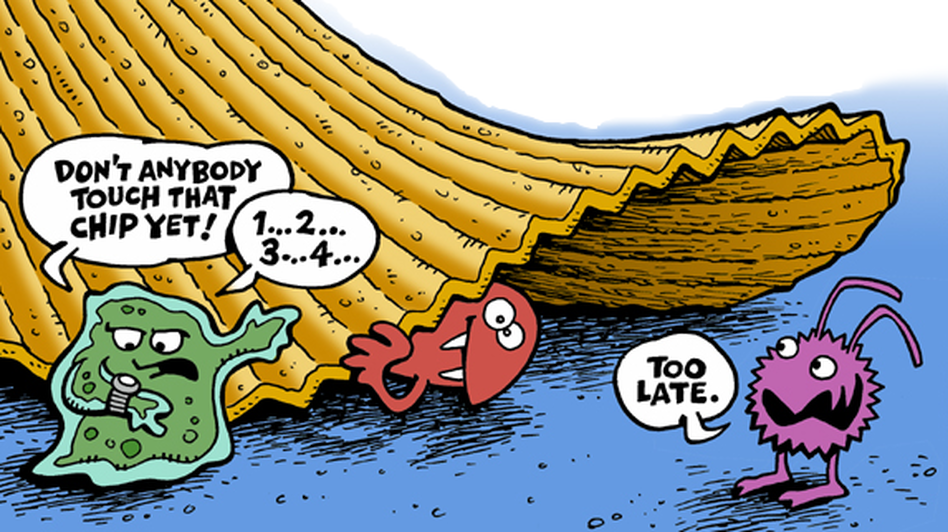Ever drop an apple or half a sandwich on the floor, dust it off, sink your teeth in, and subsequently elicit dirty looks from everyone around you? Of course you have. The ‘5 second rule’ has long been the excuse of anyone who’d ever bobbled a breadstick, fumbled a foot-long or dropped a Danish to pick back up said delicacy and eat it anyway. As long, that is, as it’s within the golden 5 second window. Those 5 seconds, as principle holds, wouldn’t allow enough time for harmful bacteria to transfer from floor to food. This, however is a myth. That’s right; The 5 second rule is a lie (watch a video from Fox News here).


In a study completed earlier this year by a team at Rutgers University (check out the study here), research found that in some instances, bacteria needed less than a second to contaminate food on the ground or dirty surfaces. In the past, the 5 second rule has been used as a universal principle – and that is where the biggest mistake is found. They found that, unsurprisingly, moist or wet foods – such as watermelon or ice cream bars – needed a very brief amount of time on the ground to become contaminated. This is due to the fact that bacteria don’t have legs, and must rely on the moisture to get from A. to B. It also can depend on the type of surface your food is dropped onto. For example, it took longer for bacteria to contaminate on carpets than it did on stainless steel and tile. Perhaps the most comforting finding for younger 5 second rule enthusiasts was that the immune system of the perpetrator has a lot to do with it as well. Logically, if you’re immune system is at a disadvantage (sickness, old age, etc.) it’s more likely that the 5 second rule will come back to bite you in the butt.
Check either link if you wanna learn more about what you could and shouldn’t be eating off the ground.

